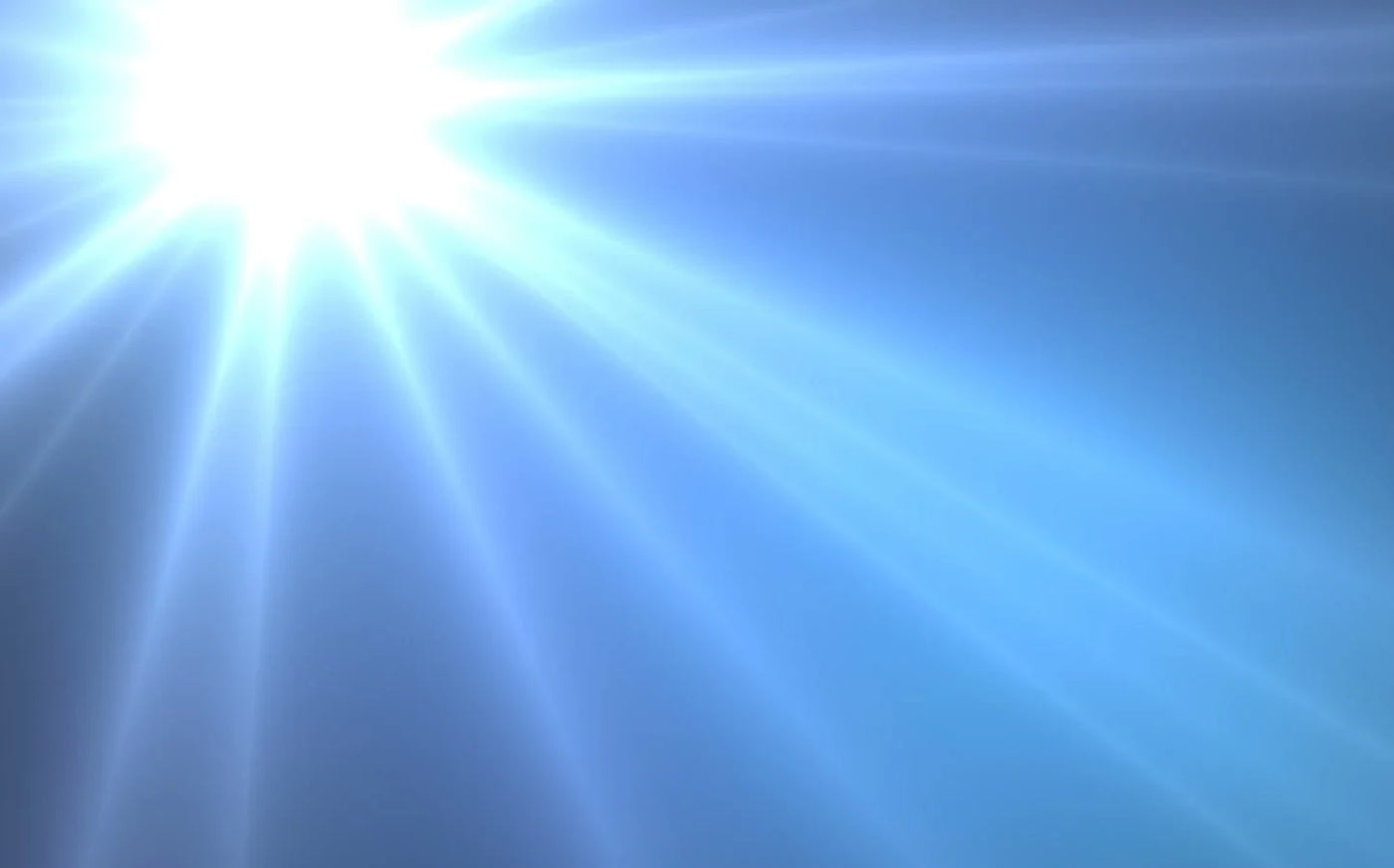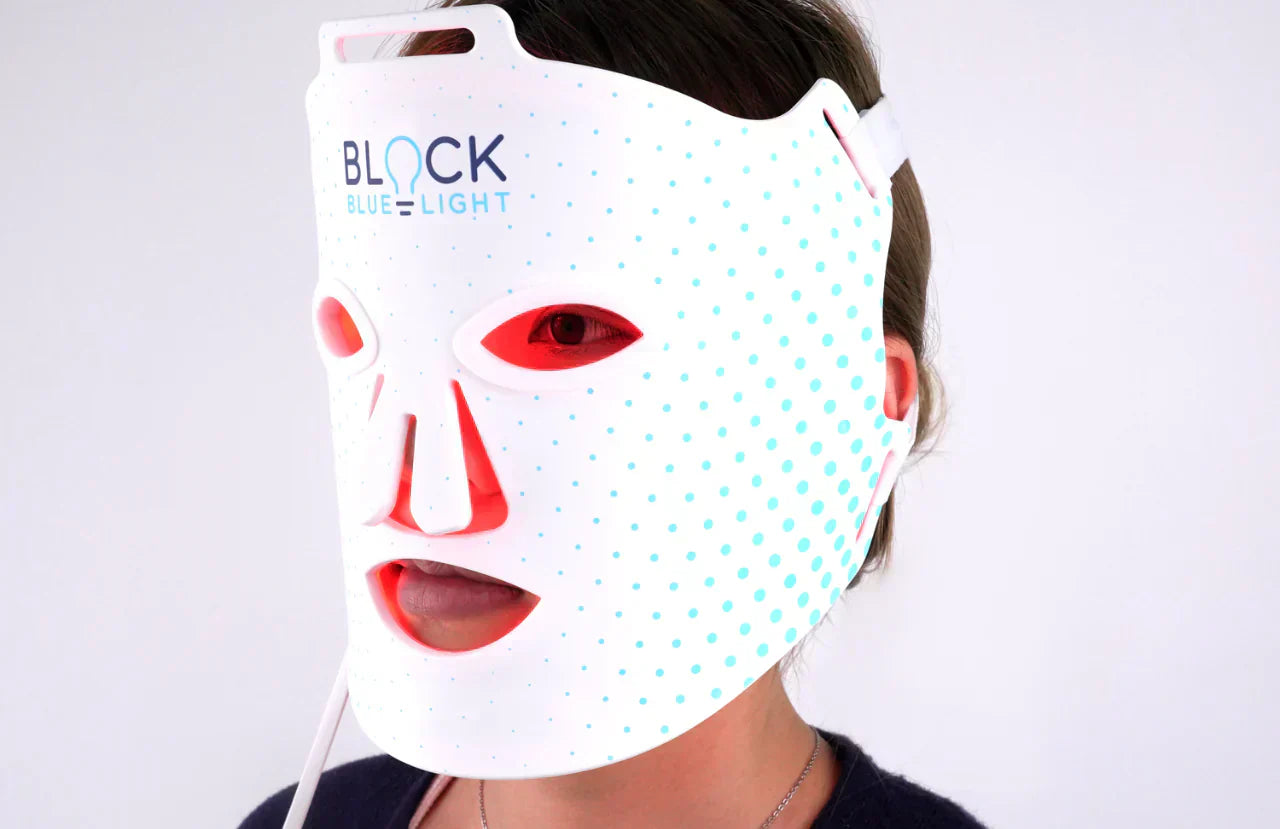In today's technology-driven world, artificial light constantly surrounds us, and one that has become a hot topic of discussion is blue light. Blue light is all around us, and its sources range from natural sunlight to the screens of our electronic devices. However, there is growing concern about the potential adverse effects of excessive blue light exposure on our well-being. This article will answer your question, 'Where does blue light come from?' to help you understand the issue at its core.
Jump To Section
What is Blue Light?
Natural Sources of Blue Light
Artificial Sources of Blue Light
The Effects of Blue Light on Health
How to Protect Your Eyes From Blue Light
Choosing the Right Blue Light Glasses
What is Blue Light?
White light comprises different colours, each with its wavelength. Blue light is a high-energy visible (HEV) light with short and high-intensity wavelengths. It is part of the visible light spectrum, which ranges from violet to red. Blue light falls on the shorter wavelength end of the spectrum, while red light is on the longer side.
To answer the question, 'Where does blue light come from?' We'll have to look at the natural and artificial sources of blue light.
Natural Sources of Blue Light

If you're wondering what the main source of blue light is, the answer is the sun. The sun is the most significant natural source of blue light. Sunlight is crucial in regulating our circadian rhythm, the internal body clock. Exposure to natural blue light during the day helps maintain alertness, concentration, and a balanced sleep-wake cycle. The blue colour of the sky is a result of Rayleigh scattering. As sunlight passes through the Earth's atmosphere, shorter wavelengths (blue and violet) scatter more than longer wavelengths, making the sky appear blue.
Artificial Sources of Blue Light

Screens:
This is a no-brainer- we're constantly hearing about the negative impact of screens and reducing our screen time. But how (and why?) do they emit blue light? And most importantly, what is the blue light on our phones?
Screens emit blue light through backlighting. Most screens use LED (Light Emitting Diode) technology for backlighting. These LEDs have a special coating that creates white light when energized. However, this process produces blue light as a byproduct, contributing to the screen's overall light output.
There are three types of screens:
- LED Screens: These are prevalent in smartphones, tablets, and many laptops
- OLED Screens: You will find these in high-end smartphones and top-notch TVs.
- LCD Screens: Commonly used in computer monitors and flat-screen TVs.
LEDs and OLEDs emit moderate-high amounts of blue light, especially at higher brightness levels. LCDs generally emit less blue light than LED and OLED screens, but it's still essential to be mindful of their usage.
Factors Affecting The Blue Light Content of Screens
Several factors can influence the amount of blue light emitted by screens:
- Colour Temperature: The colour temperature setting of your screen affects the amount of blue light it emits. Higher colour temperatures, like 6500K, produce cooler and bluer light. Lower temperatures, around 3000K, emit warmer and more yellowish light.
- Brightness Level: Brightness matters! Higher brightness settings result in more blue light emission. Consider reducing screen brightness, especially during the evening and nighttime.
Indoor Lighting:
Indoor lighting is of two types:
1. Fluorescent Lighting:
Fluorescent bulbs are slowly disappearing, but you can still find them in some offices and public spaces.
These lights pass an electric current through mercury vapour, emitting ultraviolet (UV) light. A phosphor coating inside the bulb absorbs the UV light, which causes it to emit visible light.
The amount of blue light produced by fluorescent bulbs depends on the specific type of fluorescent bulb used and its colour temperature.
2. LED Lighting:
LEDs (Light Emitting Diodes) have gained popularity recently due to their energy efficiency, long lifespan, and versatility.
LEDs work by using semiconductors that emit light when electricity passes through them. These semiconductors are of materials like gallium nitride or indium gallium nitride, which emit blue or near-ultraviolet light.
To create white light, which is more suitable for indoor Lighting, LEDs use a combination of blue light and phosphors that convert some blue light into other colours. However, despite this conversion, LEDs still emit considerable blue light.
The amount of blue light emitted by LEDs and fluorescents can vary, depending on the colour temperature and the specific product's design. In general, LEDs emit more blue light than most fluorescent bulbs.
There is some good news, though: Recently, suppliers such as BlockBlueLight have developed LED bulbs with low levels of blue light, thanks to tech advancements. These modern LEDs have the long lifespan and energy-saving features of regular LEDs but produce a balanced spectrum of light, similar to the sun.
Street Lights

When the sun goes down, and darkness blankets the city, street lights come to life, illuminating our surroundings. These lights are vital in ensuring our safety and visibility at night.
There are two types of streetlights:
- HID Street Lights
- LED Street Lights
1. HID Street Lights
To create light, traditional street lights use high-intensity discharge (HID) bulbs, such as mercury vapour or metal halide lamps. HID streetlights emit a significant amount of blue light but also produce light in other parts of the spectrum. However, the trend is now shifting to blue-light-intensive LED street lamps.
2. LED Street Lights
LED streetlights use less energy and have a longer lifespan. But they produce more blue light than traditional high-intensity discharge (HID) street lights. LED lamps have cooler colour temperatures, so they emit more blue light.
The colour temperature of a light source is measured in Kelvin (K), and higher values are associated with cooler, bluer light. In comparison, lower values represent warmer, yellower light. For instance, a typical warm-white LED street light may have a colour temperature of around 3000K, providing a more yellowish light. In comparison, a cool-white LED street light may have a colour temperature of about 4000K or higher, emitting a bluer light.
The government designs cities for efficiency and not human health, so it's no surprise that LED lights have taken over. In an ideal world, communities would opt for LED street lights with warm colour temperatures or use shielding techniques to reduce skyglow and minimize the potential adverse effects of blue light on humans and wildlife.
The Effects of Blue Light on Health
Effect of Blue Light on Sleep:
Exposure to blue light during the evening and nighttime can interfere with our circadian rhythm, the internal clock that regulates our sleep-wake cycle. Blue light suppresses melatonin production, a hormone that helps us fall asleep. This disruption can lead to difficulty falling asleep and poor sleep quality.
Spending long hours in front of digital screens exposes our eyes to blue light, causing digital eye strain. Symptoms include eye discomfort, dryness, irritation, and difficulty focusing on nearby objects after prolonged screen use.
Effect on Our Retina:Prolonged exposure to blue light may contribute to retinal damage over time. Studies suggest that blue light exposure, particularly the high-energy wavelengths, can lead to oxidative stress in retinal cells, potentially increasing the risk of age-related macular degeneration (AMD).
What Does Blue Light Do To Your Brain?:Blue light exposure during the day can positively impact mood, alertness, and productivity. However, excessive exposure, especially during the evening, may increase anxiety and stress, affecting overall well-being.
How to Protect Your Eyes From Blue Light
Use Blue Light Filters:Consider using blue light filters on digital devices like smartphones, tablets, and computers. Many devices now have built-in settings that reduce blue light emission during the evening. Additionally, software and apps are available that adjust the colour temperature of your screen to reduce blue light exposure.
Limit Screen Time:
To reduce blue light exposure, limit your screen time, especially before bedtime. Establish a digital curfew by avoiding electronic devices at least one to two hours before sleep.
Use Warm Lighting:
Opt for warm-coloured lighting, such as BlockBlueLight's Blue Light Free Lighting, which emit no blue light in the evening and nighttime. Using warmer hues can create a more relaxed environment conducive to better sleep.
Take Frequent Breaks:
Take regular breaks to rest your eyes when using digital devices. Follow the 20-20-20 rule: every 20 minutes, take a 20-second break and look at something 20 feet away
Screen Position and Lighting:
Ensure proper screen positioning and lighting. Position your screen at eye level and adjust the brightness to match the ambient lighting in your surroundings.
Full Spectrum Lighting:
Replace the regular LEDs in your home with full spectrum light bulbs which produce a balanced spectrum of light, similar to the sun.
Blue Light Blocking Glasses:
Invest in blue light-blocking glasses, also known as computer glasses or daytime blue light glasses. These eyeglasses have special lenses that filter out much blue light, reducing eye strain and discomfort during prolonged screen use.
Choosing the Right Blue Light Glasses:

Recently, many sellers are promoting fake blue light glasses that do nothing to protect your eyes. If you’re exploring blue light glasses, ensure you buy a pair that’s been scientifically proven to work. See the following checklist to ensure you make a good purchase.
1. Choose the correct lens colour
The lens colour depends on whether you buy blue light reading glasses for day or night.
Day glasses are clear or yellow and have a mild filter, while night glasses are red or amber and have a strong filter. Read our lens colour guide to determine which lens you need.
2. Check the spectrophotometer report (to see if they work)
Always ask for a spectrophotometer report, also known as a transmittance spectrum report, when buying blue light-blocking glasses. This is a thorough report detailing the specific wavelengths filtered by the lens. It is measured by shining steady light through the lens and measuring the light output. The report outlines the 'wavelength' and the 'percentage' of light filtered. For instance, it can tell you whether blue light has been filtered by 10%, 50%, or even 100%.
So, what should this report indicate for different types of blue light glasses? For clear-lens glasses, ensure that they filter at least 50% of the light in the 400-500 nm range. If the filtration is less than 50%, for example, 10% or 20%, the glasses will a minimal difference.
Yellow-lens glasses should completely filter out blue light in the lower range of the blue light spectrum (400-455nm) and meet the above requirements.
As a trusted provider, all BlockBlueLight's products undergo individual lab-grade spectrophotometer testing, ensuring their efficacy.
3. Check if the glasses protect against the peak wavelength of blue light
Confirm that the glasses protect the peak blue light wavelength at 455nm, where the most damage can occur. BlockBlueLight's glasses incorporate a special pigment for protection in this range.
4. Make sure the glasses are compatible with prescription glasses
If you’re already wearing prescription glasses, you’ll have to switch between 2 pairs of glasses! At BlockBlueLight, all our designs are compatible with prescription glasses. Simply upload your eye card when placing your order, and the lens will be created accordingly.
Remember, when it comes to health-related products, caution is paramount. The light entering your eyes influences your vision, hormones, mood, appetite, and sleep patterns. Investing in research-backed prescription glasses that effectively filter blue light is critical.
At BlockBlueLight, we embrace this notion and meticulously design our products to harmonize with your body and nature. Each pair of our blue light filtering reading glasses is individually tested, and the results are transparently shared in the product descriptions on our website.
For more information on blue light, refer to the following articles:





